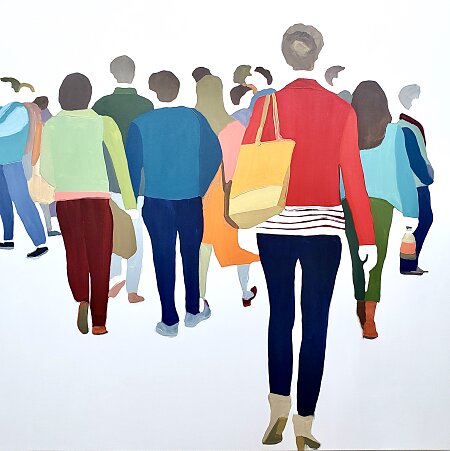
A Curve in the Road
In the X-ray suite, under the revealing glare of fluorescent lighting, half-naked in preparation for repeat mammography, I glimpsed an earlier view of my left breast on the radiographer’s screen: lobules, ducts, fat … and a dot, a pinpoint of light, stark in the black-and-white medium of the radiographic image. It had been circled in the radiologist’s script—an incomplete flourish, as if made with little thought or care, in blue digital pen.
Later, in a treatment room, under the jelly-cold scrutiny of an ultrasound wand, a female radiologist inserted a fine needle into my exposed left breast. A moment of pressure. The nurse squeezed my hand. And the dot of light became a minuscule volume of clear fluid contained in the radiologist’s syringe.
At the end of the procedure, as the nurse applied a small, round, flesh-coloured plaster to the pinhole puncture—a plaster that, later that night, I would peel away to leave a sticky residue but no trace of pierced skin—I told her of my husband’s death. The nurse, in turn, spoke of a good friend who had unexpectedly died on holiday. The radiologist, overhearing our conversation, recounted her distress for another colleague facing the imminent passing of a parent. And in that moment of exchange, that moment of sharing, that moment of divulgence with strangers, probably never to be met again, I felt a part of something more than myself. I felt less alone. Death acknowledged. Life confirmed.
My diagnosis was a small benign cyst. I was given the result before I left the treatment room. It would be confirmed a week later in a standardised letter—“your examination was satisfactory and showed no signs of breast cancer.” The diagnostic conclusion was a clinical judgement based on the ultrasound examination, the clarity of the extracted fluid, and the radiologist’s experience. There was no wait for laboratory analysis or further medical interpretation, no wait for letters to be written, appointments to be scheduled, treatments and follow-ups to be factored in. There was no wait for engagement with the ailing, over-worked nationalised health service—poised between a cherished past and an uncertain future. My body remained intact. The spectre of intervention averted. The spirit of normality resumed.
On leaving the clinic, I paused on the threshold, thankful for what seemed like a reprieve. I stepped out onto the pavement, into the city, into the hubbub of car fumes and warm tarmac, a horn blast and a snatch of conversation, the beep-beep of the pedestrian crossing and the distant bass tones of music from the nearby cemetery that doubles as a park. And the glass door of the clinic swung shut behind me.
In the car, on the approach to home, I passed the curve in the road. The cub had disappeared. Nothing marked the spot. It was as if she were never there.
